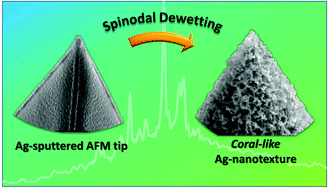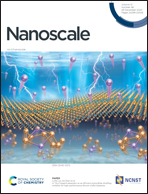Coral-like plasmonic probes for tip-enhanced Raman spectroscopy†
Abstract
Tip-enhanced Raman spectroscopy is a powerful tool for the analysis of system interfaces, enabling access to chemical information with nanometric spatial resolution and sensitivity up to the single molecule level. Such features are due to the presence of proper metallic nanostructures at the TERS probe apex, which, via the excitation of a plasmonic field, confine light to a nanometric region. The nano-sized characteristic of such metallic structures intrinsically renders the fabrication of high performing and reproducible TERS probes still a challenge. In this paper, we present a facile, rapid and effective approach to prepare Ag-based TERS probes. The fabrication process proposed herein is based on spinodal dewetting of Ag-coated AFM-probes through a RF plasma treatment. The obtained probes appear covered with a coral-like silver nanotexture, endowed with an excellent plasmonic activity. Intriguingly, such a texture can be easily tuned by changing some process parameters, such as Ag film thickness and exposure time to the plasma. The as-prepared TERS probes show a high TERS enhancement, reaching 107, and allow a good spatial resolution, down to 10 nm. Finally, we suggest an easy and effective procedure to restore oxidized TERS tips following exposure to ambient air, which can be applied to all types of Ag-based TERS tips.



 Please wait while we load your content...
Please wait while we load your content...